List of birds of prey
List of Different Types of Raptors: Focus on Bird Conservation introduces these fascinating carnivorous birds, known for their sharp talons, powerful beaks, and excellent eyesight. Raptors are divided into two primary groups: diurnal raptors (active during the day) and nocturnal raptors (active at night). Below is a comprehensive list of raptor types, categorized by their unique characteristics and hunting behaviors.
Learn more about on Birds of prey visit my website and read article on Birds of prey .
1.Eagles
- Description: Large and powerful with broad wings and keen eyesight.
- Examples: Bald Eagle, Golden Eagle, Harpy Eagle.
- Hunting Style: Ambush predators, primarily targeting medium-sized mammals and fish.
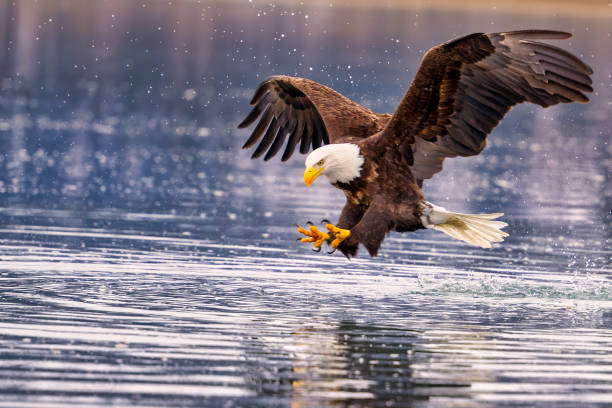
Sea and Fish Eagles:
- Bald Eagle ( Haliaeetus leucocephalus): North America, white head and tail.
- White-tailed Eagle (Haliaeetus albicilla): Eurasia, brown with white tail.
- Steller’s Sea Eagle (Haliaeetus pelagicus): Northeast Asia, very large with white shoulders.
- African Fish Eagle (Haliaeetus vocifer): Africa, distinctive call and coloring.
- Pallas’s Fish Eagle (Haliaeetus leucoryphus): Central Asia, brown with white markings.
- White-bellied Sea-Eagle (Haliaeetus leucogaster): Australia and Southeast Asia.
Booted Eagles (having feathered legs):
- Golden Eagle (Aquila chrysaetos): Widespread in the Northern Hemisphere.
- Wedge-tailed Eagle (Aquila audax): Australia, largest bird of prey there.
- Verreaux’s Eagle (Aquila verreauxii): Africa, specialized for hunting hyraxes.
- Bonelli’s Eagle (Aquila fasciata): Southern Europe, Asia, Africa.
- Booted Eagle (Hieraaetus pennatus): Eurasia and Africa, smaller with variable plumage.
- Little Eagle (Hieraaetus morphnoides): Australia.
Hawk-Eagles:
- Crowned Eagle (Stephanoaetus coronatus): Africa, powerful forest hunter.
- Ornate Hawk-Eagle (Spizaetus ornatus): Central and South America.
- Black Hawk-Eagle (Spizaetus tyrannus): Central and South America.
Other Notable Eagles:
- Harpy Eagle (Harpia harpyja): Neotropics, one of the largest and most powerful.
- Philippine Eagle (Pithecophaga jefferyi): Philippines, critically endangered, monkey-eating.
- Martial Eagle (Polemaetus bellicosus): Africa, powerful and aggressive hunter.
- Long-crested Eagle (Lophaetus occipitalis): Africa, distinctive long crest.
- Bateleur (Terathopius ecaudatus): Africa, short tail and distinctive flight.
2. Hawks
- Description: Agile and medium-sized, often with broad wings and rounded tails.
- Examples: Red-tailed Hawk, Cooper’s Hawk, Sharp-shinned Hawk.
- Hunting Style: Known for their ability to hunt in forests or open fields, targeting birds and small mammals.

Buteos (Soaring Hawks):
- Red-tailed Hawk (Buteo jamaicensis): North America, very common and adaptable.
- Red-shouldered Hawk (Buteo lineatus): Eastern North America, distinctive red shoulders.
- Broad-winged Hawk (Buteo platypterus): North America, migrates in large flocks.
- Swainson’s Hawk (Buteo swainsoni): North America, long-distance migrant.
- Rough-legged Hawk (Buteo lagopus): Arctic and subarctic, feathered legs.
- Ferruginous Hawk (Buteo regalis): Western North America, large and powerful.
- Short-tailed Hawk (Buteo brachyurus): Americas, variable plumage.
Accipiters (Forest Hawks):
- Sharp-shinned Hawk (Accipiter striatus): North America, small and agile.
- Cooper’s Hawk (Accipiter cooperii): North America, medium-sized, often seen in suburbs.
- Northern Goshawk (Accipiter gentilis): North America and Eurasia, large and powerful.
- Eurasian Sparrowhawk (Accipiter nisus): Eurasia, small and widespread.
Other Notable Hawks:
- Harris’s Hawk (Parabuteo unicinctus): Americas, unique social hunting behavior.
- Gray Hawk (Buteo nitidus): Americas, gray plumage.
- Zone-tailed Hawk (Buteo albonotatus): Americas, mimics vultures in flight.
- Common Black Hawk (Buteogallus anthracinus): Americas, dark plumage, often near water.
- Roadside Hawk (Rupornis magnirostris): Americas, very common and adaptable.
- White-tailed Hawk (Geranoaetus albicaudatus): Americas, white tail.
- Crane Hawk (Geranospiza caerulescens): Neotropics, long legs and double-jointed knees.
- Long-legged Buzzard (Buteo rufinus): Eurasia and Africa, large and robust.
- Rufous-winged Buzzard (Butastur liventer): Southeast Asia, distinctive rufous wings.
3. Falcons
- Description: Sleek, fast-flying raptors with long, pointed wings.
- Examples: Peregrine Falcon, American Kestrel, Gyrfalcon.
- Hunting Style: Speed-based hunters, often diving at incredible speeds to catch prey mid-air.
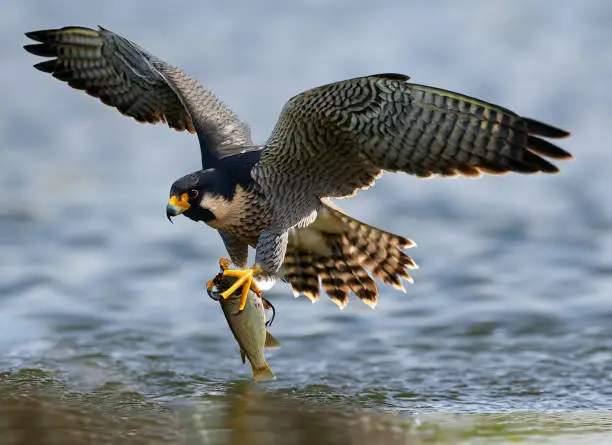
1. Peregrine Falcon (Falco peregrinus): Arguably the most famous, known for its incredible diving speed (over 200 mph). Found worldwide.
2. Gyrfalcon (Falco rusticolus): The largest falcon, found in Arctic regions.
3. Saker Falcon (Falco cherrug): Found in Central Eurasia, known for its strength and endurance.
4. Lanner Falcon (Falco biarmicus): Found in Africa, Southeast Europe, and into Asia.
5. Laggar Falcon (Falco jugger): Found in the Indian subcontinent.
6. Prairie Falcon (Falco mexicanus): Found in western North America.
7. Merlin (Falco columbarius): A small falcon found in North America and Eurasia.
8. American Kestrel (Falco sparverius): The smallest falcon in North America, very colorful.
9. Eurasian Hobby (Falco subbuteo): A small, agile falcon found in Eurasia and Africa.
10. Aplomado Falcon (Falco femoralis): Found in the Americas, known for its long tail.
11. Barbary Falcon (Falco pelegrinoides): Closely related to the Peregrine, found in North Africa and the Middle East.
12. Red-footed Falcon (Falco vespertinus): A migratory falcon found in Eastern Europe and Asia.
4. Owls
- Description: Silent nocturnal hunters with round faces and exceptional night vision.
- Examples: Great Horned Owl, Barn Owl, Snowy Owl.
- Hunting Style: Ambush predators, relying on stealth and sound to catch rodents and insects.

1. Great Horned Owl (Bubo virginianus): One of the largest and most widespread owls in North America, with prominent ear tufts.
2. Snowy Owl (Bubo scandiacus): Distinctive white plumage, found in Arctic regions.
3. Eurasian Eagle-Owl (Bubo bubo): The largest owl in the world by wingspan, found across Eurasia.
4. Barn Owl (Tyto alba): Heart-shaped face, found worldwide except for Antarctica.
5. Barred Owl (Strix varia): Distinctive “who cooks for you?” call, found in North America.
6. Great Gray Owl (Strix nebulosa): One of the largest owls by length, found in North America and Eurasia.
7. Long-eared Owl (Asio otus): Long ear tufts, found in North America, Europe, and Asia.
8. Short-eared Owl (Asio flammeus): Often hunts during the day, found worldwide.
9. Northern Saw-whet Owl (Aegolius acadicus): One of the smallest owls in North America.
10. Burrowing Owl (Athene cunicularia): Lives in burrows, often in grasslands.
11. Northern Hawk Owl (Surnia ulula): Hunts during the day, resembles a hawk in appearance.
12. Elf Owl (Micrathene whitneyi): The smallest owl in the world, found in North America.
13. Spectacled Owl (Pulsatrix perspicillata): Distinctive facial markings, found in Central and South America.
14. Blakiston’s Fish Owl (Ketupa blakistoni): One of the largest fish owls, found in East Asia.
15. Tawny Owl (Strix aluco): Common in Europe and Asia, known for its varied calls.
5. Kites
- Description: Graceful fliers with slender bodies and forked tails.
- Examples: Black Kite, Mississippi Kite, Swallow-tailed Kite.
- Hunting Style: Scavengers or opportunistic feeders, often feeding on carrion or insects.
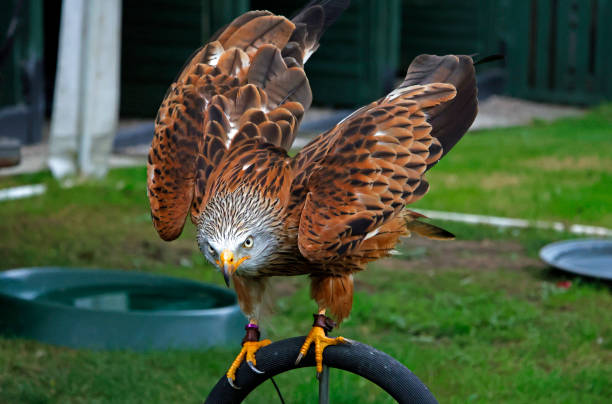
Milvus (Typical Kites):
- Red Kite (Milvus milvus): Europe, distinctive reddish-brown plumage and forked tail.
- Black Kite (Milvus migrans): Widespread across Eurasia, Africa, and Australia.
Haliastur (Whistling and Brahminy Kites):
- Whistling Kite (Haliastur sphenurus): Australia, distinctive whistling call.
- Brahminy Kite (Haliastur indus): Asia and Australia, striking reddish-brown and white plumage.
Lophoictinia (Square-tailed Kite):
- Square-tailed Kite (Lophoictinia isura): Australia, distinctive square tail.
Harpagus (Double-toothed Kite):
- Double-toothed Kite (Harpagus bidentatus): Neotropics, unusual toothed beak.
Ictinia (Mississippi and Plumbeous Kites):
- Mississippi Kite (Ictinia mississippiensis): North and South America.
- Plumbeous Kite (Ictinia plumbea): Neotropics.
Chondrohierax (Hook-billed Kite):
- Hook-billed Kite (Chondrohierax uncinatus): Americas, specialized for eating snails.
Elanus (Elanus Kites – often called “white-tailed kites”):
- Black-shouldered Kite (Elanus axillaris): Australia.
- White-tailed Kite (Elanus leucurus): Americas and Africa.
- Letter-winged Kite (Elanus scriptus): Australia.
Macheiramphus (Bat Hawk):
- Bat Hawk (Macheiramphus alcinus): Africa and Asia, crepuscular and hunts bats.
Gampsonyx (Pearl Kite):
- Pearl Kite (Gampsonyx swainsonii): South America.
Rostrhamus (Snail Kite):
- Snail Kite (Rostrhamus sociabilis): Americas, highly specialized for eating apple snails.
6. Harriers
- Description: Long-legged raptors with an owl-like facial disk.
- Examples: Northern Harrier, Marsh Harrier, Hen Harrier.
- Hunting Style: Low flight hunters, scanning grasslands for small mammals and birds.

Widely Distributed:
- Hen Harrier (Circus cyaneus): Found in North America (where it’s called the Northern Harrier) and Eurasia.
- Montagu’s Harrier (Circus pygargus): Breeds in Europe and Asia, migrates to Africa.
- Pallid Harrier (Circus macrourus): Breeds in Eastern Europe and Asia, winters in Africa and South Asia.
- Marsh Harrier (Circus aeruginosus): Widespread in Europe, Asia, and Africa.
Africa:
- African Marsh Harrier (Circus ranivorus): Found in southern and central Africa.
- Black Harrier (Circus maurus): Found in southern Africa.
Asia:
- Eastern Marsh Harrier (Circus spilonotus): Found in Asia.
- Pied Harrier (Circus melanoleucos): Found in Asia.
Australia and Pacific:
- Swamp Harrier (Circus approximans): Found in Australia, New Zealand, and Pacific islands.
- Spotted Harrier (Circus assimilis): Found in Australia and Indonesia.
- Papuan Harrier (Circus spilothorax): Found in New Guinea.
South America:
- Cinereous Harrier (Circus cinereus): Found in South America.
- Long-winged Harrier (Circus buffoni): Found in South America.
Island Endemics:
- Réunion Harrier (Circus maillardi): Found on Réunion Island in the Indian Ocean.
- Malagasy Harrier (Circus macrosceles): Found in Madagascar and the Comoro Islands.
7. Vultures
- Description: Scavenging birds with bald heads adapted for feeding on carrion.
- Examples: Turkey Vulture, Griffon Vulture, King Vulture.
- Hunting Style: Primarily scavengers, locating carcasses using keen eyesight and smell.
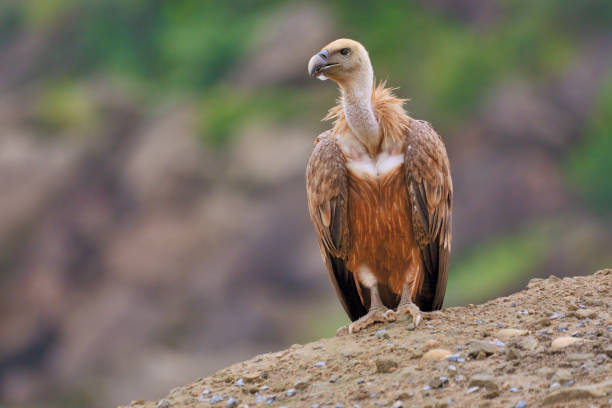
Old World Vultures (Family Accipitridae):
Lappet-faced Vulture (Torgos tracheliotos): Africa, one of the largest and most powerful Old World vultures.
Cinereous Vulture (Aegypius monachus): Eurasia, also known as the Black Vulture (not to be confused with the New World Black Vulture).
Rüppell’s Vulture (Gyps rueppelli): Africa, known for its high-altitude flight.
White-backed Vulture (Gyps africanus): Africa, sadly facing severe population declines.
Egyptian Vulture (Neophron percnopterus): Widespread in Africa, Europe, and Asia, uses tools to crack eggs.
New World Vultures (Family Cathartidae):
Turkey Vulture (Cathartes aura): Widespread in the Americas, excellent sense of smell.
Black Vulture (Coragyps atratus): Americas, often seen in groups.
King Vulture (Sarcoramphus papa): Central and South America, distinctive colorful head.
Andean Condor (Vultur gryphus): South America, one of the largest flying birds in the world.
California Condor (Gymnogyps californianus): North America, brought back from the brink of extinction through conservation e
8. Ospreys
- Description: Specialized fish-eating raptors with reversible outer toes.
- Examples: The Osprey (Pandion haliaetus).
- Hunting Style: Dive feet-first into water to capture fish.
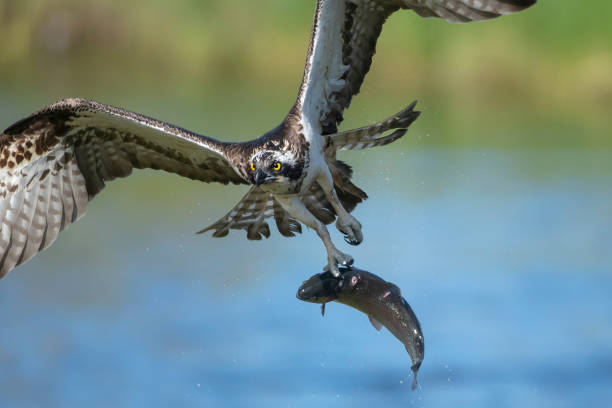
Pandion haliaetus haliaetus: This is the nominate subspecies, found in Europe, Asia, and North Africa.
Pandion haliaetus carolinensis: Found in North America and the Caribbean, this subspecies is generally larger and darker than the nominate subspecies.
Pandion haliaetus ridgwayi: This subspecies is non-migratory and is found in the Caribbean. It’s similar in size to carolinensis but has paler head and breast feathers.
Pandion haliaetus cristatus: Found in Australia and the southwest Pacific, this is the smallest of the subspecies and has a darker necklace and paler crown.
9. Caracaras
- Description: Opportunistic raptors with a mix of hunting and scavenging behaviors.
- Examples: Crested Caracara, Southern Caracara.
- Hunting Style: Ground-based hunters and scavengers in open grasslands.

Within the Phalcoboenus genus (often called “mountain caracaras”):
Carunculated Caracara (Phalcoboenus carunculatus): Found in the Andes of Ecuador and Colombia.
Mountain Caracara (Phalcoboenus megalopterus): Found in the Andes of South America.
White-throated Caracara (Phalcoboenus albogularis): Found in the Andes of Chile and Argentina.
Striated Caracara (Phalcoboenus australis): Found in the Falkland Islands.
Within the Caracara genus (the crested caracaras):
Northern Crested Caracara (Caracara cheriway): Found in the southern United States, Mexico, Central America, and the Caribbean.
Southern Crested Caracara (Caracara plancus): Found in South America.
Within the Milvago genus (smaller caracaras):
Yellow-headed Caracara (Milvago chimachima): Found in Central and South America.
Chimango Caracara (Milvago chimango): Found in southern South America.
And then there are two more distinct species often considered caracaras:
Red-throated Caracara (Ibycter americanus): Found in Central and South America.
Black Caracara (Daptrius ater): Found in the Amazon basin.
